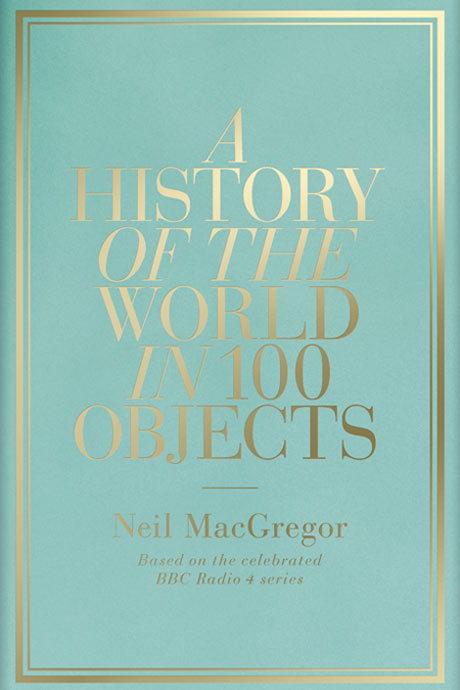One of the things I've been doing while offline is reading. A lot of reading. Aside from tackling the classics, with one eye on picking out titles which had been out of print for far too long, I also delved into the murky world of populist science titles and entry-level history books. In truth, I didn't have much expectation for the majority of the books, but one (unexpectedly, and beautifully) caught me off guard.
A History of the World in 100 Objects by Neil MacGregor.1
It got me thinking of the items which tell the history of British comics. It ties in with what I have been saying here, about the history needing preservation, and runs through some of the guide (in an extremely minor way) as a frustration that more isn't being done now.
We have to have a rough idea, before considering placement in a list, so...
• Dudley D. Watkins' drawing board. There is no item which I want to see more than the board upon which so many truly great strips were created. There are artists who are, arguably, more famous, and there are artists with greater range, but few who provided consistent entertainment week after week with such subtlety. The location of the board is currently unknown.
• Tilt & Bogue printing blocks. When it comes to simply >gorgeous presentation, there are few publishers of the era who can claim to have as crisp, well-bound, and downright beautiful, editions as Tilt & Bogue. In comparison, Dalziel's methods seem relatively crude, and even Punch volumes fade into the background when placed alongside the slim, wonderfully balanced books.
• William Hogarth's pens and nibs. It is difficult to think of a British artist whose work has touched more people than Hogarth. Reprinted endlessly, his images have attention-grabbing detail which continually brings him new admirers. To see the items which played a part in the creation of such work is somehow more powerful than the items which usually garner attention - chairs and desks may be important, but the pens were held daily by the great man.
• Frank Hampson's Spaceport model for Dan Dare. His attention to detail, and insistence on craft, would likely be considered wasteful in these days of Photoshop and Wacom tablets, but there is a great deal to admire in Hampson's old-fashioned photo-reference for the Dan Dare strips. There are numerous photos of the models used, but the spaceport is, perhaps, the grandest of them all.
• The Wilfredian League of Gugnuncs badges. The lure of the fan club was never greater than with Pip, Squeak & Wilfred, and the strip's devoted following continues to provide surprising evidence in the pages of contemporary publications. The badges, with Wilfred's ears prominently displayed, are the lasting tribute to a cultural phenomenon. And who doesn't love the characters?
• From Ally Sloper Merchandise. As the first heavily-merchandised comic character there are many items which fall into this category, though the iconic Toby jug, mantelpiece ornaments, wall decorations, and even pipes. Yes, tobacco-related products. A fascinating, and oft overlooked, moment in time which gave rise to everything since. It is likely that a full collection of all the associated memorabilia could support an exhibition on their own.
• From Denis McLaughlin's Western Collection. Used extensively in the creation of his work, though it is difficult to pinpoint one item from the collection - though many of his fans will no doubt have favourite images, his deft handling of translating three-dimensional items into iconic illustrations could only have been accomplished with access to such an impressive range of items.
• From the Police Raids on Savoy Books. There hasn't been a more sustained attack on a publisher by authorities before or since, and while I'm at a loss to pick one definitive item, the moment needs to be noted in any collection of items which tell the story of British comics history. The paperwork authorising the raid, perhaps?
• The Judge Dredd Promotional Costume. Seen throughout the nineties, the costume - which perfectly captured the style of the comic - made numerous appearances at shops and conventions. There are, perhaps, more unique and tactile items which would resonate with fans of the title, but the costume brings back fond memories.
• Arnaldo Putzu Painting. The covers of 1970s issues of Look-In are spectacular when seen en mass, and the title wouldn't have been half as impressive without his artistic talent. It is extremely difficult to pick one of the paintings out in particular, but the Six Million Dollar Man cover is a favourite.
Ten items is a good place to leave this, or we could be at this forevermore. Suggestions for items which speak to the rich history of British comics can be left below...
1. The British Museum maintains a page for the exhibition.

No comments:
Post a Comment
Comments are moderated - please keep language all-ages friendly and stay on topic.
Thanks for taking the time to comment.